From Cuba in 1898, over Pearl Harbor to Iraq in 2003, Libya in 2011 and today, Venezuela.
From Cuba in 1898, over Pearl Harbor to Iraq in 2003, Libya in 2011 and today, Venezuela.
By Sergio Rodríguez Gelfenstein
The course of history has conclusively demonstrated that, in order to further its interventionist and militaristic ambitions, the United States has sought subterfuges and fabricated false evidence, which history itself has either disproved or exposed as false. The manipulation of evidence to garner favorable support from the country’s public opinion in the first instance, and that of the world as a global supporter of its destabilizing excesses, has been a constant feature of United States foreign policy since it began its involvement in world affairs in the development of its imperialist policy at the end of the 19th century. A few examples, at different times in the 20th century and so far in the present, demonstrate the continuity of the false arguments constructed for this purpose.
The explosion of the Battleship Maine in 1898 in Cuba
In 1898, Cuba was in the midst of its struggle for political independence from Spain. Economically, the United States controlled the island’s main properties and was the largest buyer of Cuban sugar. Under these conditions, it took advantage of the colonial government’s weakness to gradually interfere in the Caribbean island’s internal affairs, “supporting” those in favor of independence with the hidden intention of provoking a war against Spain and seizing its colonial possessions, leaving Cuba within its sphere of influence.
In early 1898, President McKinley sent the battleship Maine to Havana harbor to “protect” American interests on the island that might be affected by the Cuban independence struggle. This was supported in the United States through propaganda and media manipulation by William Randolph Hearst and Joseph Pulitzer, owners of two of the main media outlets and prominent defenders of imperialist theses.
On February 15, 1898, in “strange” circumstances, the Maine exploded off the port of Havana, killing 260 officers and soldiers out of the 355 on board. This led to the United States immediately claiming responsibility for the incident against Spain (subsequent investigations showed that the Spanish had nothing to do with it; it is believed to have been an internal explosion due to the number of explosives inside the ship).
Hearst and Pulitzer manipulated this event to secure the support of the U.S. public to wage war against Spain. They achieved this when the Washington government sent an ultimatum—virtually a declaration of war—to Madrid, forcing it to initiate hostilities. This conflict, known as the Spanish-Cuban-American War, gave the United States the opportunity to intervene in the face of the imminent triumph of the Cuban patriots, producing a mediated independence that was later legalized through the Platt Amendment, allowing for blatant U.S. interference in Cuba for sixty years.
Philippines 1898
The Philippines was another of their war prizes. The Washington administration was influenced by the thesis of Alfred Mahan, who asserted that the United States, as a great nation, should expand beyond its borders and join the race waged by the great European powers “to occupy all the wastelands of the earth.”
Before the events involving the battleship Maine, and knowing that, like Cuba, there were groups promoting independence in the Philippines, the US government decided to recruit one of its leaders, Emilio Aguinaldo, and initially make him one of its allies. The US fleet destroyed the Spanish Navy, but they still didn’t have territorial control, so they transferred Emilio Aguinaldo (who was in exile) from Hong Kong to the Philippines to organize a Filipino army that, together with US soldiers, would take Manila and permanently expel the Spanish. With the signing of the Treaty of Paris in December 1898, Spain ceded sovereignty of the Philippines to the United States.
Pearl Harbor 1941
On December 7, 1941, Japan attacked and destroyed the U.S. naval base at Pearl Harbor in Hawaii, sinking 18 ships, including five battleships, and killing 3,435 military and civilian personnel. This act became the justification for the United States to formally enter World War II. However, it is rarely mentioned that before this event, bilateral relations were already very tense, not because of the imperialist actions Japan had taken in China, but because of the measures the United States had unilaterally adopted against the Japanese Empire.
It is known that US Navy intelligence services knew about the possibility of an attack on the naval base several days before it actually occurred. Radars in Hawaii detected the Japanese planes, but the high command allowed the attack to happen and did nothing to prevent it. The consequence of this event was the unification of American public opinion in favor of participating in the war, leading Congress to approve the Declaration of War against Japan, which prompted Germany and Italy, in turn, to do the same, thereby allowing the growth and strengthening of the US industrial machinery, turning that country into the world’s leading military power.
The Gulf of Tonkin, Vietnam, 1964
The Gulf of Tonkin is located off the coast of what was formerly known as North Vietnam. Popular support in South Vietnam for Ho Chi Minh’s ideas and principles grew considerably, so much so that they jeopardized the stability of the pro-American government, rejected by the majority. Faced with this situation, the United States decided to intervene directly in the conflict. In early August 1964, a series of events in the Gulf of Tonkin “justified” this military intervention, with North Vietnam accused of launching a torpedo attack on the US destroyer Maddox while—according to official information—it was carrying out a routine mission in international waters on August 2.
Two days later, the North Vietnamese government was again accused of attempting to torpedo the destroyer, Turner Joy. The lies US President Lyndon Johnson and Secretary of State Robert McNamara made to the public served as the main argument for escalating the conflict and increasing the direct presence of US troops in the region. With the approval of Congress, President Johnson was granted “the power to take whatever military measures he deemed necessary in Southeast Asia.”
Granada, 1983
On March 13, 1979, revolutionary leader Maurice Bishop and his New Jewel movement seized power in Grenada, establishing a new government without the support of the United States. Washington began applying pressure by freezing all international credits in an effort to create a favorable political climate that would weaken the popular movement.
In October 1983, a military conspiracy led by Deputy Prime Minister Bernard Coard overthrew Bishop, ordering his house arrest and subsequent assassination. This sparked a social uprising on the island that led to the US intervention in Grenada. President Ronald Reagan informed the public that the coup d’état in Grenada was endangering the lives of a group of American medical students on the island, necessitating the presence of his troops. Seven thousand soldiers were sent to combat forces loyal to Bishop, which numbered no more than 2,000, including Cuban collaborators on the island.
American historian Howard Zinn claimed that a former CIA officer had confessed to him that “the real reason for the invasion was an opportunity for the United States (which wanted to overcome the sense of defeat it had suffered in Vietnam) to show that it was a powerful nation.”
Iraq, 2003
Following the terrorist attacks of September 11, 2001, when the United States was struck for the first time on its own soil, President George W. Bush immediately declared a “war on terror,” stating that “we must make no distinction between terrorists and the countries that harbor terrorists.” With the approval of Congress, his administration was given carte blanche to carry out military action anywhere in the world.
Bush was presented with the historic moment and the “perfect” opportunity to continue and realize the long-standing imperial ambition of destroying the Iraqi government under the false pretext that it possessed nuclear, biological, and chemical weapons of mass destruction and that it was one of the nation’s harboring and “protecting” terrorist groups, including Al Qaeda, the “responsible” for the attack on the Twin Towers.
Thus, without a formal declaration of war, the United States launched a war against Iraq on March 20, 2003, after Congress granted the government such authority without the approval of the United Nations Security Council. Subsequent investigations clearly demonstrated that such weapons of mass destruction did not exist and that it was all a plot concocted by intelligence agencies to justify the aggression and occupation of the Arab country.
Libya, 2011
Libya was always considered a “country suspected of supporting terrorism” and its leader Muammar Al Gaddafi, an American enemy to such an extent that President Obama publicly expressed his intention to “get rid” of the Libyan ruler.
In February 2011, a series of demonstrations demanding greater freedom of expression began in Benghazi. Apparently inspired by what had happened months earlier in Egypt and Tunisia—events dubbed the Arab Spring—these demonstrations gradually degenerated into acts of violence, with Gaddafi being held responsible through a massive and manipulative media campaign carried out by Western media outlets and the Qatari television network Al Jazeera. This marked the beginning of the destabilization process in Libya that led to the intervention of the North Atlantic Treaty Organization (NATO) and the overthrow of Gaddafi’s government. Without presenting evidence, the United States accused the “Libyan regime” of murdering thousands of citizens who were demanding greater democracy and encouraged the rebels to form a parallel government.
Venezuela, 2025.
In March 2015, President Barack Obama (Democrat) declared Venezuela an “unusual and extraordinary threat to the national security and foreign policy of the United States.” This decision has remained unchanged during the administrations of his successors, Donald Trump (Republican) and Joe Biden (Democrat).
Trump’s return to the White House has not been without contradictions between the various tendencies swarming within the administration. These differences have not been unrelated to U.S. policy toward Venezuela. The “shuffles” between neoconservatives, outsiders, personal friends of the president, and MAGAs (unrestricted followers of Trump’s ” make America great ” slogan) America great again ”) are present in every foreign policy decision of the ruddy president, allowing the omnipresence of the neo-conservatives represented by Marco Rubio in policy towards Latin America.
The Secretary of State, whom Trump calls “Little Marco,” is operating out of his visceral hatred of Cuba, Nicaragua, and Venezuela. Rubio’s irrationality cannot be analyzed in political terms, since his resentment, rancor, and animosity toward these three countries surpasses any consideration. Excluded from decisions regarding the most important issues of foreign policy, the neoconservatives have unleashed their full fury against Havana, Managua, and Caracas.
As has been customary in US foreign policy, the Trump administration has this time used false documents to argue about a supposed relationship between the Venezuelan government and the now-defunct “Tren de Aragua” criminal group. To do so, they have invoked the Alien Enemies Act of 1798, which establishes that a foreign combatant can be deported without judicial process when the United States is at war with another state.
Trump had to prove that the “Tren de Aragua” was an organization directed by the Venezuelan state. However, federal judge Fernando Rodríguez, who, incidentally, was appointed to the position by Trump himself, ruled against it, arguing that the application of this law was illegal since it only applies when the nation is facing an organized attack, which is not the case. The truth is that the Trump administration’s hatred of Venezuela has been used as an argument to deport its citizens to El Salvador without due process.
It has been learned that internal discussions have taken place within Trump’s cabinet based on information obtained by intelligence agencies, which have verified that there is no connection between the “Aragua Train” and the Venezuelan government. However, the FBI—completely alone—has “proven” otherwise. This was confirmed by Director of Intelligence Tulsi Gabbard in a recent interview, where she stated that the issue was discussed internally. Gabbard defended the measure based on the FBI report. In that same interview, the official admitted that information from those meetings was being leaked to the press, including the issue of Venezuela.
The intelligence agency report, unofficially released to the press, states: “While the climate of permissiveness allows the Aragua Train to operate, the Maduro regime likely does not have a policy of cooperating with the Aragua Train and does not direct its movements and operations in the United States.”
The “Aragua Train” issue had already yielded positive results for Trump during his election campaign after a video showing “armed criminals” beating the inhabitants of a building in Colorado went viral. Added to this was the case of a nursing student who was brutally murdered by a Venezuelan “illegal,” which also made front-page news in all US media. This incident was used by Trump to portray the United States as a victim of migrant murderers and rapists.
From then on, Trump found it useful to use the “Aragua Train” as a crutch against Biden, whom he accused of maintaining an open-door policy on immigration, promising to carry out mass deportations once elected president, which became his first and most important electoral promise. So much so, that Biden had to halt border crossings at the last minute to try to stem the drain of votes his party was experiencing.
And just as it served him well then, Trump is now seeking to make it serve him well again, given what has been a failure of his promise of mass deportations, the real root of the problem. Let’s see. According to official figures from the Trump administration itself, there are around 30 million “illegals” in the United States. The president has set a goal of deporting at least 1 million this year, but so far in his term, he has only expelled about 53,250 people (as of mid-May). These figures could even be inflated, given that the Trump administration stopped publishing monthly figures.
Trump has said his priority is deporting criminals, but according to official data obtained by NBC, half of those deported have no records to prove that, and more than half of those currently detained have no charges. Even so, last year alone, the government reported that it had identified half a million “illegal” immigrants with criminal convictions. At this rate, the goal of 1 million is laughable. Trump could only deport around 100,000 per year, although some dare to predict it could be as high as 500,000, which is still a failure.
The truth is that Trump’s current figures are far below the deportations that occurred under previous Democratic administrations. According to the Washington Post, Obama deported about 400,000 people a year, more than Trump could deport now. Biden’s figures are even higher, with nearly 700,000 deportations expected by 2024.
In keeping with his interventionist policy, Trump must resort to lies to justify his actions. A public opinion like that of the United States, dumbed down by the media that exalts the idea of a “chosen nation,” is easily manipulated and manipulated by those in power. The disguise of his policies, which serves to conceal their dehumanization, is part of the DNA of his privileged political class and of the 1% who truly hold the power. But to sustain it, he always needs justification.







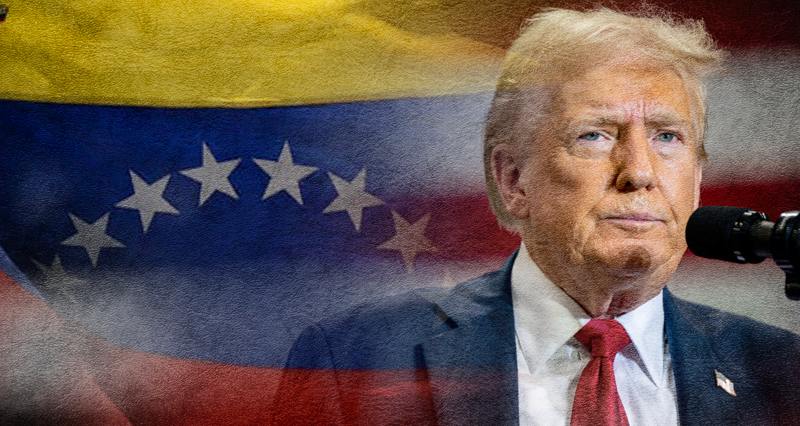

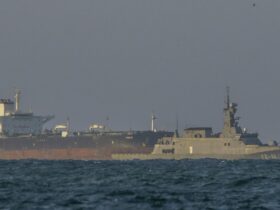


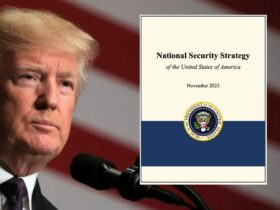
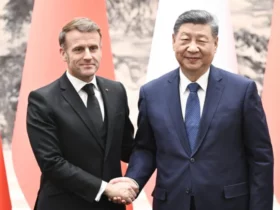

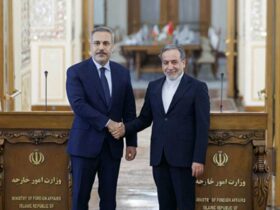
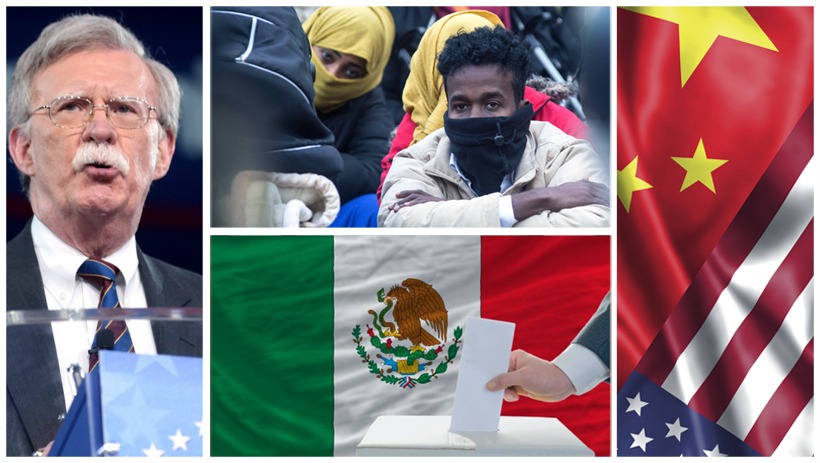
Leave a Reply